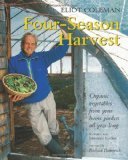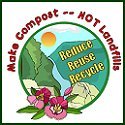You are here:
Home > Trees > Swamp White Oak
Swamp White Oak
Quercus bicolor
Price Each
$23.95

Swamp White Oak:
The Swamp White Oak tree, Quercus bicolor, is a beautiful native tree with lustrous, heavy textured leaves with wavy margins. This rugged oak grows well in either upland or swampy areas. It is tolerant of poorly drained sites and frequently is found in heavy mucky soils. The Swamp White Oak is a rapidly growing tree that flowers in spring. The acorns mature and are shed in September or October of the same year. The Swamp White Oak is a long-lived tree that may reach 300 to 350 years old. The name bicolor refers to the two-colored leaf, shining dark green above and velvety white pubescence below, turning golden in the fall. This deciduous tree has a rounded open habit. Swamp Oak trees transplant easily. It casts dense shade. The sweet acorns are eaten by whitetail deer, mallards, wood ducks, wild turkeys, squirrels, woodpeckers, and smaller rodents.

FREE Garden Journal!!
Join "Garden Notes" and plan for Harvest Success as you track and record your gardening progress.
Your Free Personal Garden Journal has pages for jotting down notes on the seeds you start,
your new plantings, when you fertilized, and even a graph to plot a new garden.
What's New?
"Organic food has a higher nutritional value than ordinary produce, a study by Newcastle University has found."
"A team grew fruit, vegetables and reared cattle on adjacent organic and non-organic sites across Europe.
They found up to 40% more antioxidants could be found in organic fruit and vegetables than in non-organic.
The team said the findings call into question the current stance of the Food Standards Agency (FSA), which is neither for nor against organic food."
Organic Food Gardening Guide
Free
Gardening Catalog
Click Here
Book of the Month

A book full of valuable information on how to harvest fresh vegetables and salad
ingredients literally year-round--yet without an expensive greenhouse or indoor light garden set-up.
Coleman combines succession planting (small sowings three or more times, rather than
one big endeavor) with cold-frame growing in the winter months. He includes how-tos for building simple cold-frames.
Read More...
Garden Tip of the Day









